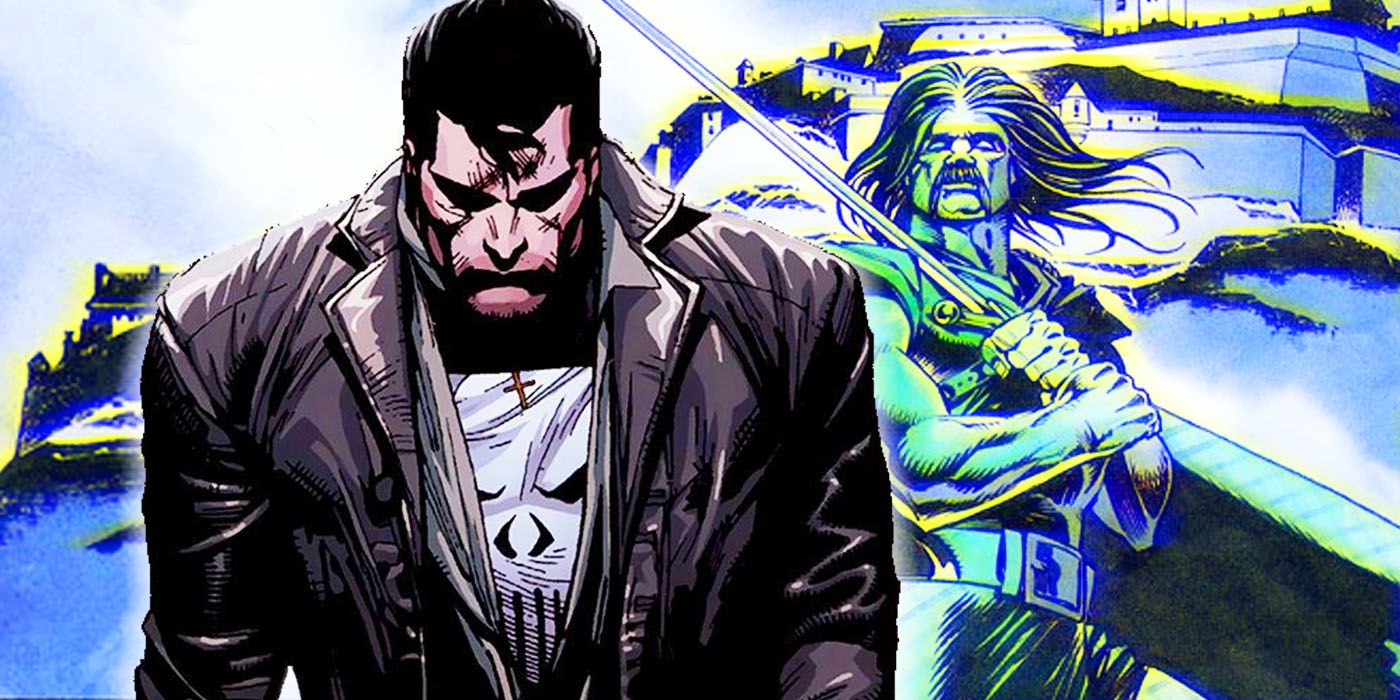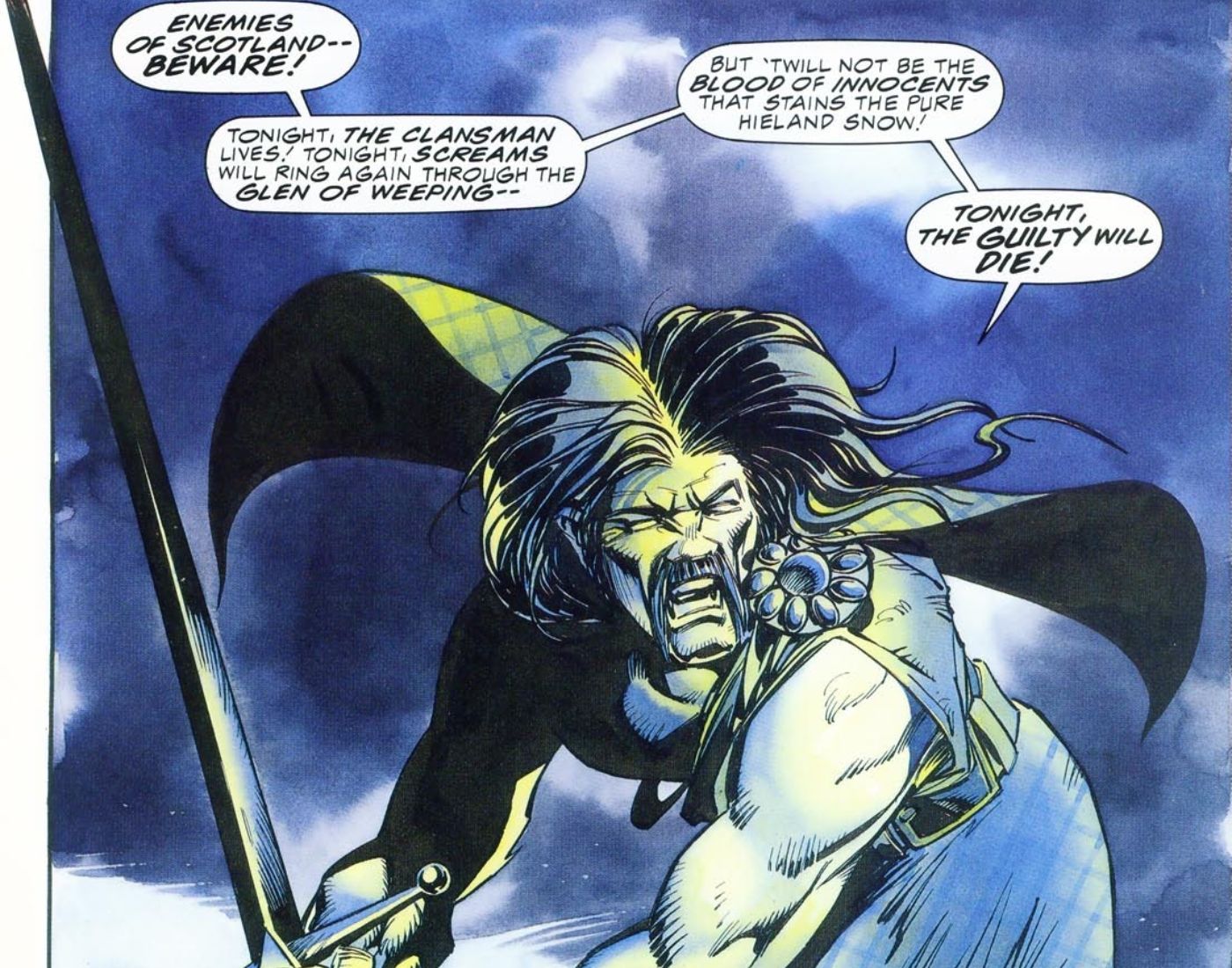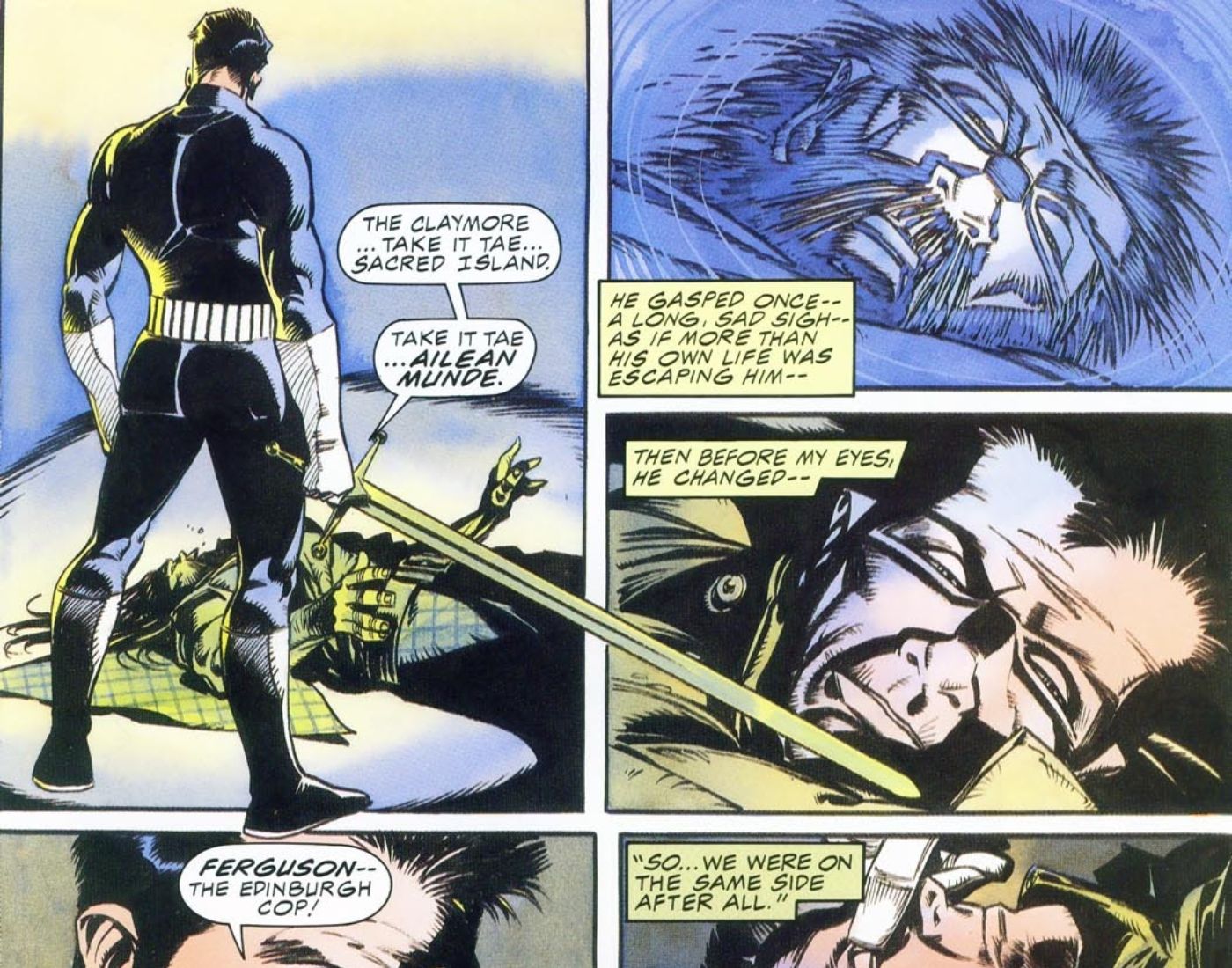The Punisher has absolutely zero tolerance for the criminal underworld. Those that make a living from the suffering of innocent people find their way onto the Punisher’s hit list, and once there, the only way off is through a body bag. In certain, more exceptional cases, the Punisher will leave New York City to track particularly important criminals. In 1991’s Punisher: Blood on the Moors by Alan Grant, John Wagner, and Cam Kennedy, the deadly vigilante travels all the way to Scotland to eradicate a major drug dealer. What he could never have known was how it could turn out to be one of the wildest missions of his life.
The mission was simple: follow Bruno Zanussi, a big-time drug dealer, to Scotland and discover the location of a major cocaine operation he was involved in. The Punisher tracks Zanussi for two days, biding his time, until a man dressed in traditional Scottish battle garb, a massive claymore clutched in his hands, attempts to kill Zanussi. Zanussi escapes and his mysterious assailant leaps into a nearby river, a fall that should have killed him.
As local police investigate the bizarre attack they learn that The Punisher was present and following Zanussi. They capture him and attempt to dispose of him so that they can hunt Zanussi on their own. The Punisher survives, and after a lucky break in his investigation, discovers the location of the cocaine operation: a whiskey distillery deep in the Scottish Highlands.
The Punisher infiltrates the distillery and learns that an international collective of cocaine distributors was devising a means of exporting cocaine through whiskey. Having seen all he needed, The Punisher gets the drop on the criminals, shotgun in hand. Except his shot misfires, the barrel of the gun having blown. The Punisher is quickly overtaken and held captive by the criminals. Rather than having a bullet put into his head, the Punisher is dunked into a tank of whiskey until he becomes horrifically drunk and then left out in the Highlands during a blizzard.
Stumbling through the cold, it seems as if the weakened Punisher has finally met his match. But a figure comes from the blinding snow and rescues him, administering a potent restorative. As the Punisher revives he sees it’s the attacker from before, The Clansman, a spirit who comes in times of need to protect Scotland. The spirit of the ancient warrior Red Ian Og inhabits the claymore the Clansman wields, transforming him into the spectral warrior. Together, The Clansman and The Punisher defeat the criminals and prevent the cocaine operation from happening. Unfortunately, The Clansman is killed during the battle and the spirit of Red Ian Og returns to his claymore revealing that his avatar had actually been one of the local police from before. The Punisher places the claymore on a tomb at the small isle of Ailean Munde, his mission complete.
Punisher: Blood on the Moor is absolutely a unique tale for the Punisher and one that takes bold chances in weaving a narrative for the character. The story starts as most Punisher tales typically do -- drug dealers, fire fights, and detective work. And yet, the inclusion of spirit warriors, enchanted swords, and dire legends places The Punisher in an adventure better suited for heroes such as Doctor Strange or Thor. It’s an interesting change of pace for the Punisher, but it strips him of some of the agency he’s best known for in his line of crime-fighting. The Punisher is a decorated war veteran and as such he relies on physical combat, intelligence gathering, and battlefield tactics to see his missions through. Adding magic to the mix unbalances his MO.
It's exciting to see Frank Castle get pushed so close to defeat; after all, drama doesn’t work if there aren’t any stakes involved. Punisher: Blood on the Moors checks off plenty of boxes that make it a worthwhile read: it places the Punisher outside of his comfort zone, it introduces a brand new character, and it has plenty of action. But the tonal shifts between the gun-toting Punisher and the claymore-wielding Clansman is a bit too stark at times, making the Punisher feel as if he stepped into the wrong comic book. The Punisher works best when he’s operating out of New York City, working alone and without the inclusion of magic.



